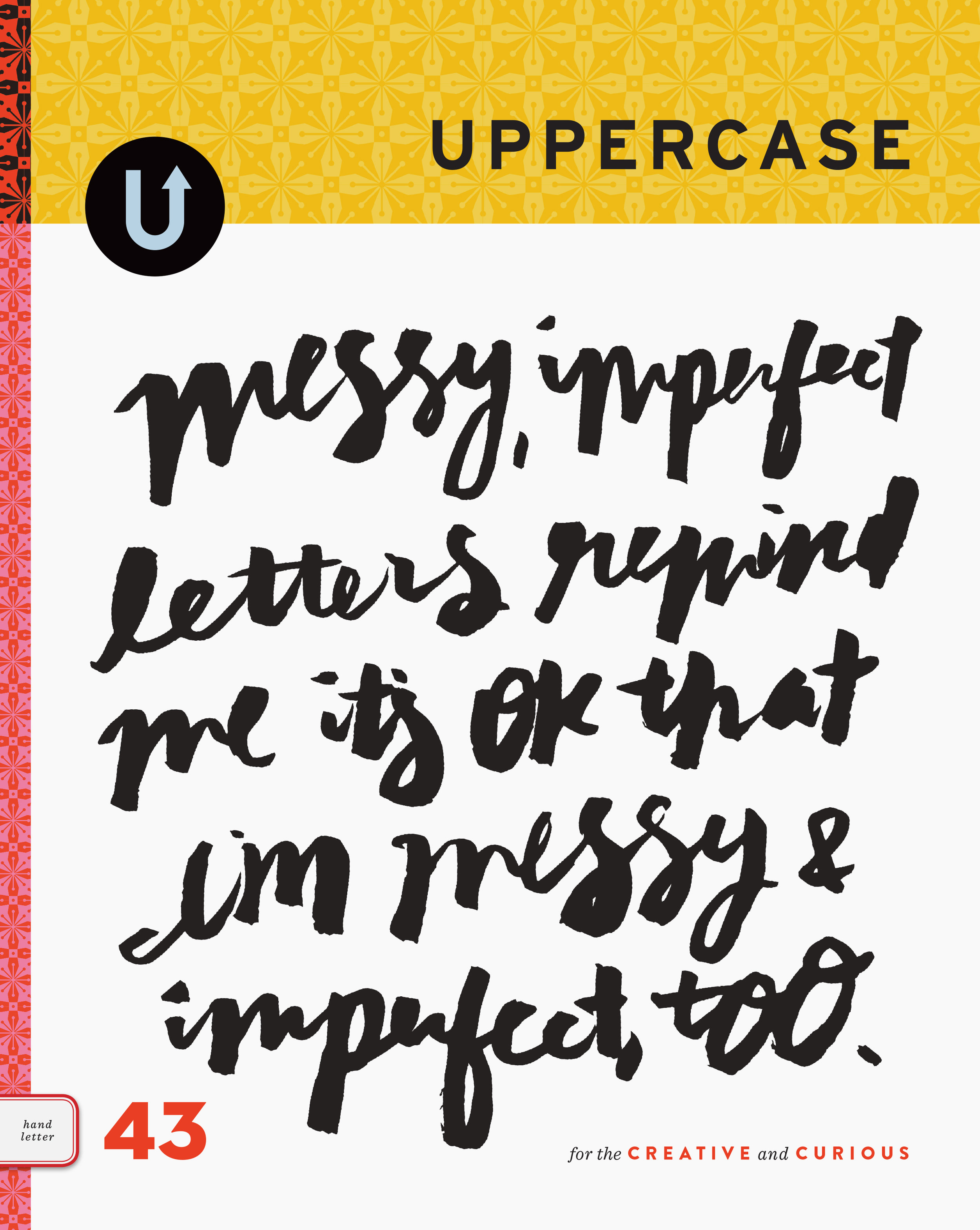The Makers Summit
/This guest post is by Tatjana Mai-Wyss, a freelance illustrator in South Carolina. She was our correspondent at last week's Makers Summit in Greenville.
UPPERCASE donated magazines for the Makers Summit goody bags. Photo from the Makers Summit Instagram.
Last weekend I was lucky enough to spend a couple of inspiring days at the Makers Summit in Greenville, South Carolina. This conference is billed as an “event designed for creative entrepreneurs who want to grow successful businesses". I was impressed to learn that the guests and attendees had come from all over the country. How lucky for me to live less than an hour away!
Tatjana with the business card wall.
Attendees could stick their cards to the wall.
The event takes place on the 5th floor of a new office building in the middle of the city. The space is bright and airy; two floors connected by an open staircase with great views of downtown Greenville. The workshops, peer group meetings and expert consultations are held in various classrooms, while the keynote speakers and discussion panels bring everyone back to the stage area.
On Friday, keynote speaker Justina Blakeney kicks things off with a bang. She is enthusiastic, colorful and engaging in person, and her talk makes a definite impression on everyone. Throughout the weekend speakers refer back to her thoughts on finding your passion, focusing on your goals (remember your “north star”) and prioritizing your worklife. Personally I like the part about “moving on”, finishing a project and moving through to the next thing without obsessing too much. (My new mantra will be: "is it good enough?”) I’m impressed by how approachable and charming she is, and enjoy meeting her later over succotash and bourbon/ginger ale cocktails at the “Best Craft Party Ever."
Lettering print by @jennyhighsmith from the goody bag. Photo by @kukajuice.
Most of our lives as creatives are spent in our offices/studios and on our own, so the best part (and also the most challenging sometimes) is being part of a group and meeting so many interesting people in such a short amount of time. It’s so much fun to know that your badge gives you licence to walk up to a stranger and ask any amount of questions over your morning coffee.
Speaking of coffee, the food at the summit deserves mention. There is stylish coffee (and fresh smoothies) throughout the weekend, beautiful (and delicious) cakes for Friday’s coffee break, three fun venues for Friday’s party (my favorite is an outdoor terrace with colorful cushions and twinkly lights) and a decadent breakfast buffet on Saturday. Homemade donuts for saturday’s coffee break continue the party atmosphere, and now that I think of it, the emphasis on good food might be a southern thing.
The focus of this conference is really on making something concrete and getting it out there, so the discussion panels centre on resources and funding for small businesses, scaling up and managing a growing business, and marketing all around. The panelists have a good variety of approaches and perspectives and answer questions thoughtfully.
Workshops, peer group and expert sessions can be a bit more customizable and let you ask questions specific to your experience.
It will probably take some time for me to digest all the information from the Makers Summit, but I’m very glad I went, and very happy to have made new friends and experiences.




































































































